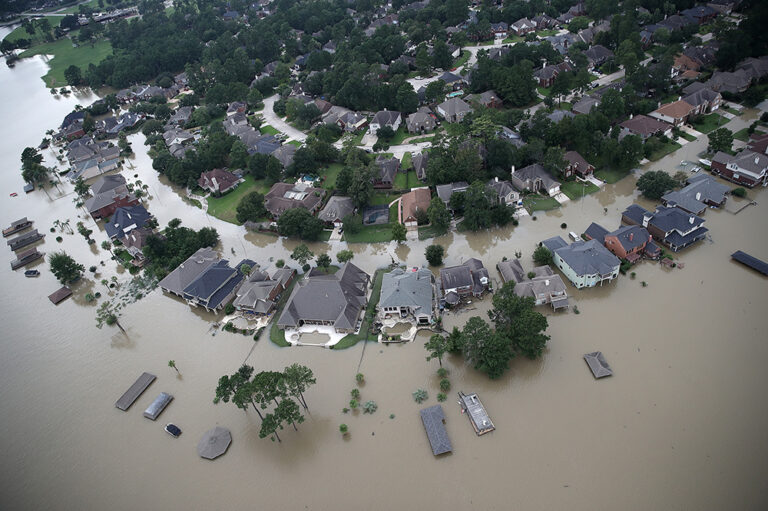It’s Been 28 Years Since We Last Raised the Gas Tax, and Its Purchasing Power Has Eroded
The gas tax has not been raised in 28 years, and America’s infrastructure network is suffering the consequences. The tax was last raised in 1993 from 14.1 cents to 18.4 cents per gallon, where it remains today. Because the gas tax is not pegged to inflation, its purchasing power has eroded significantly over the past 28 years, and the tax is now “worth” 45 percent less than in 1993; if the tax had been indexed for inflation each year since 1993, it would be approximately 15 cents higher in 2021. The decline in purchasing power has important implications for the federal budget and our nation’s infrastructure, and has led some to call for a new effort to address the gas tax.
The term “gas tax” refers to an excise tax on motor and diesel fuel that funds roughly 80 percent of the Highway Trust Fund’s revenues, which then go towards road construction and maintenance as well as other capital projects related to transportation. Prices for gas in the United States are very low relative to other developed countries, many of which levy both a value added tax and a separate duty on fuel. As a result, taxes in those other advanced economies generally account for a much higher share of the total price of fuel than in the United States. For instance, taxes account for over 60 percent of the total per-liter price of gasoline in Germany, France, the United Kingdom, and Italy, four members of the G7. Put another way, a car owner in Germany paid an average of $6.12 per gallon of fuel in 2019, while their American counterpart paid an average of $2.87.
Rising construction costs and the growing needs of an aging highway system have placed great strain on the Highway Trust Fund, resulting in consistent funding shortfalls in recent years. What’s more, increased fuel efficiency in motor vehicles and projected decreases in motor fuel consumption by Americans will continue to put downward pressure on revenues coming into the fund. Looking ahead, the problem will only get worse — the Highway Trust is projected to face a cumulative shortfall of $207 billion by 2031.
Funding shortfalls in the Highway Trust Fund are typically filled by transfers from the Treasury’s general fund. Those transfers do not bring in any new federal revenues, but they allow spending from the fund to continue.
Federal funding for transportation infrastructure usually targets large or complex projects, which often have regional or national impact. To address localized infrastructure needs, many states have implemented their own fuel taxes that are pegged to inflation, but the fixed federal gas tax has meant gradually less federal funding assistance (in inflation-adjusted terms) for states to undertake infrastructure projects. Simply put, there are more needs identified than there are dollars available.
With huge funding shortfalls on the horizon, a number of policy options have been floated:
- Increase the federal gas tax and index it for inflation. A joint report from the National Academies of Sciences, Engineering, and Medicine and the Transportation Research Board supported this option. In its recent compendium of options for reducing the decicit, CBO reports that raising the gas tax by 15 cents per gallon and indexing it to inflation each year would increase revenues by $237 billion over the next 10 years. However, the gas tax is applied at the same rate regardless of income; therefore, an increase would have a larger effect on lower-income Americans.
- Switch the gas tax from a fixed rate to a percentage of the retail price of fuel so that revenues would rise with increases in fuel prices; of course, the inverse is also true and revenues could fall with decreases in fuel prices.
- Replace the fuel tax with a mileage-based user charge, commonly known as “vehicle-miles travelled (VMT) fees”, in which drivers pay fees based on the distance driven, regardless of their vehicle’s fuel efficiency. Proponents see this plan as an eco-friendly option that would charge based on usage rather than the type of automobile using the roads; critics fear that the plan would disproportionately affect rural Americans who tend to drive longer distances.
The United States’ infrastructure needs are profound and growing — and they threaten our economic future. Major challenges include meeting the growing demand on urban components of the Interstate Highway system, ensuring that the system is adaptable to changing vehicle technologies, and incorporating future climate conditions into planning.
As the purchasing power of revenues raised by the gas tax decreases, so too does the government’s ability to build and maintain essential infrastructure projects like bridges, tunnels, and highways. Without addressing the gas tax or identifying alternative sources of revenues, annual funding shortfalls will worsen, thereby hampering the nation’s ability to undertake critical investments in our infrastructure.
Image credit: Predrag Vuckovic/Getty Images/iStockphoto
Further Reading
Budget Basics: The National Flood Insurance Program
The National Flood Insurance Program is run by the federal government to reduce the impact of flooding on private and public structures.
Why Did the Federal Government Get Involved in Student Loans?
Skyrocketing student debt has generated significant discussion about ways to improve the financing of higher education in the United States.
How Do Federal Student Loans Affect the National Debt?
Student debt held has been steadily increasing ever since the federal government switched to direct lending.


